Tag Archives verticillium

Verticillium may undermine canola blackleg resistance
Verticillium stripe may compromise blackleg resistance protection in canola, new research out of Manitoba suggests

Researchers scramble to understand verticillium in Canada
Disease is a relative newcomer to Canada and has been the subject of little research globally
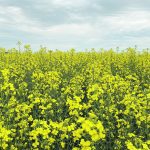
Study finds alkaline soil promotes soil fungus
Alberta researchers determine that verticillium stripe is more severe in canola growing regions where pH is 7.4 to 8.6
WINNIPEG — Verticillium stripe is a more common and troublesome disease for canola growers on the eastern half of the Prairies, particularly in Manitoba. Meanwhile, verticillium isn’t a huge issue in Alberta. There may be a simple reason for this geographic variation — soil pH. Researchers at the University of Alberta have learned that Verticillium […] Read more
Verticillium stripe in spotlight as threat grows
A U of A study just wrapped up, and four Canola Agronomic Research Program projects are now investigating the disease
Glacier FarmMedia – If you’re a canola grower on the Prairies, you know there are no chemical solutions or varieties to kill or resist soil-borne verticillium stripe disease. You may also know the handful of management practices that can thwart the disease to some extent. And if a crop has been damaged by it, you […] Read more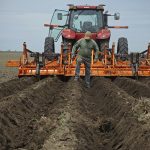
Seed potatoes early to avoid verticillium
Pushing a problem field to the front of the planting queue may reduce infection pressure later in the season
Verticillium wilt is a problem for a lot of crops in Manitoba, including canola, sunflowers and alfalfa. In potatoes, the fungus Verticillium dahlia is the main cause of potato early die complex. In a 2021 interview with the Co-operator, Mario Tenuta, University of Manitoba soil scientist and main investigator with the Canadian Potato Early Dying […] Read more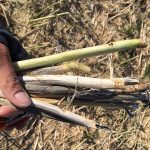
Verticillium’s impact studied
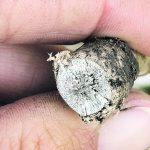
Researchers study verticillium yield losses

Farmers watch as verticillium extends its reach in Sask.
The canola disease appears to be moving west and north after being found in eastern part of the province last year
Anecdotal evidence suggests that verticillium is moving north and west across Saskatchewan. In 2022, Saskatchewan Agriculture staff discovered that verticillium stripe, a disease of canola, was commonplace in the eastern part of the province. This fall, producers in other regions have found the disease in their canola. “I’ve got verticillium in Davidson like you wouldn’t […] Read more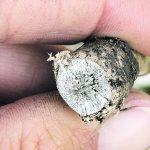
Verticillium has still not been confirmed in Alta.
As pathologists continue to check for verticillium stripe, researchers find a link between it and blackleg
Verticillium stripe, a disease of canola, is nearly everywhere in Manitoba and is now common in eastern Saskatchewan. But it’s not in Alberta. Plant pathologists in Alberta have searched for verticillium in post-harvest disease surveys since 2020. So far, they haven’t found it. “In 2020, we found suspicious symptoms in about four fields, but the […] Read more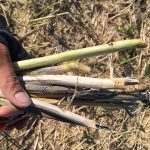
Canola varieties show genetic resistance to verticillium
University of Manitoba researcher leads study to better understand genetic resistance to the soil-borne disease
CARMAN, Man. — Research in Manitoba has found some canola varieties, or canola lines in the development pipeline, have resistance to verticillium. That’s a relief for canola growers because verticillium stripe has become a common disease in canola fields, at least in the eastern Prairies. “I don’t know if they’re commercial (varieties) or not. The […] Read more


